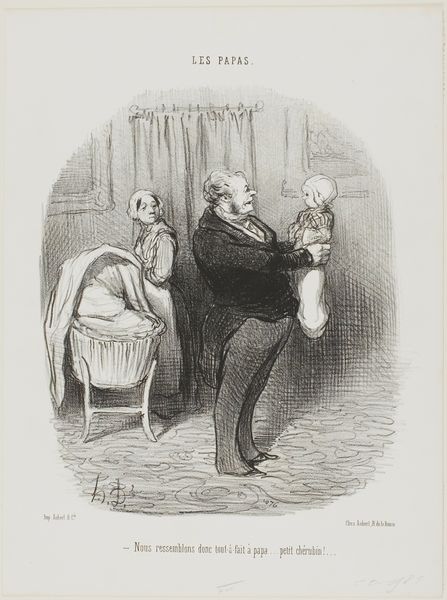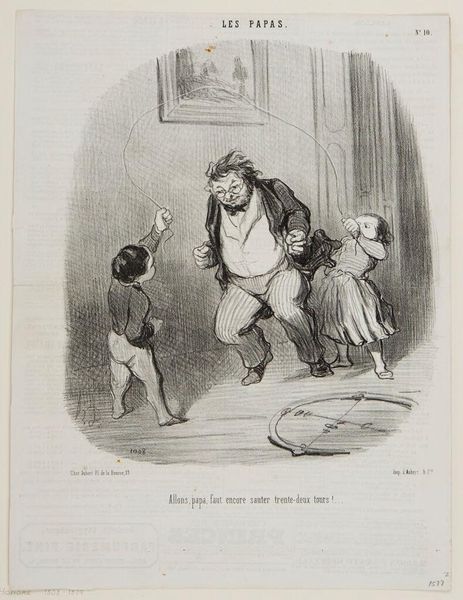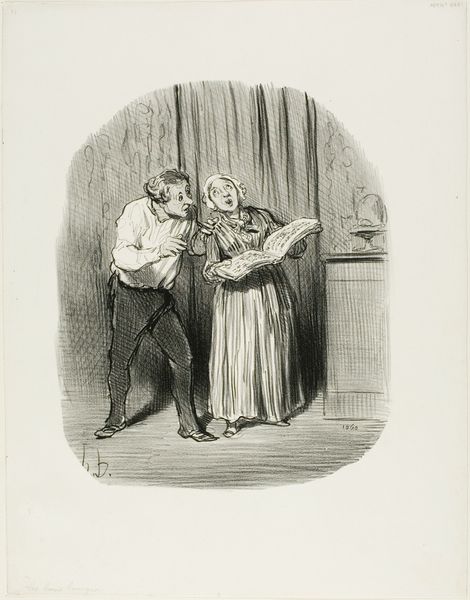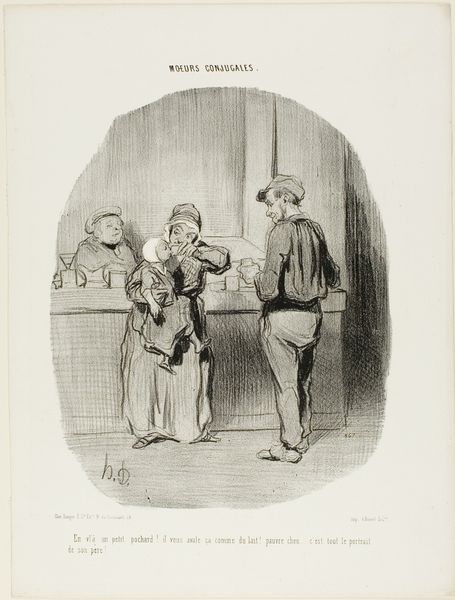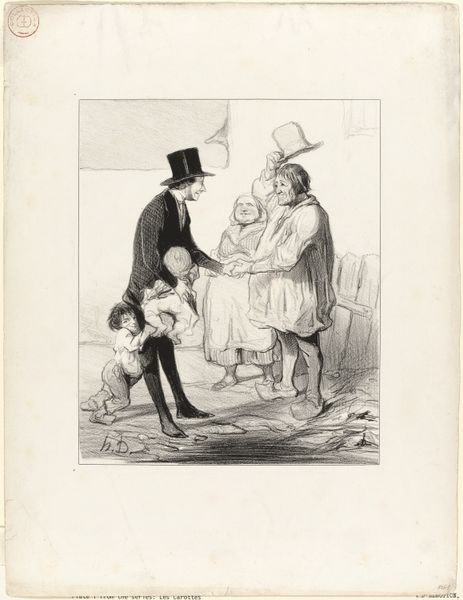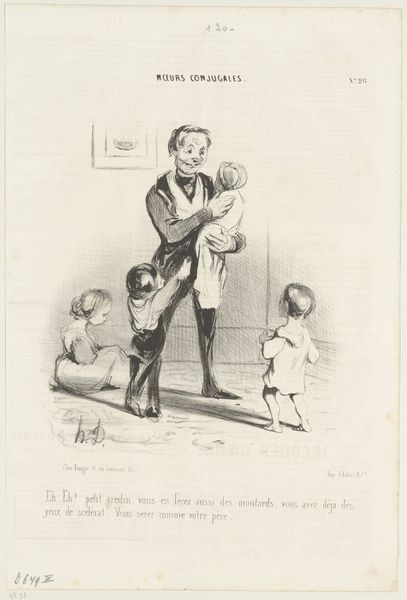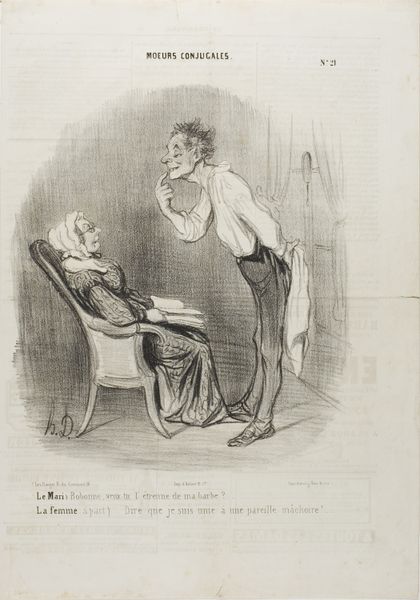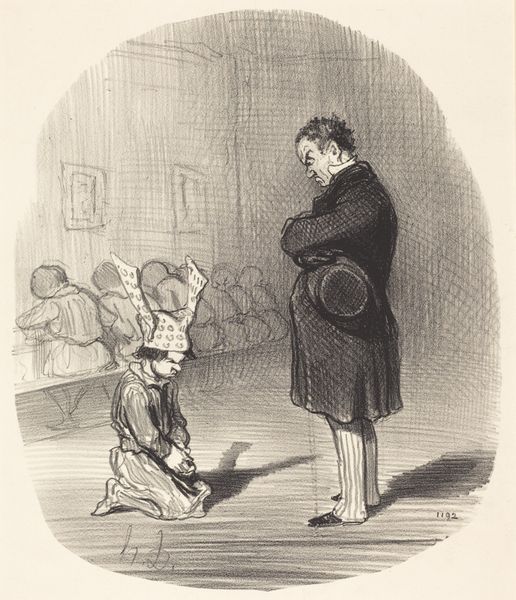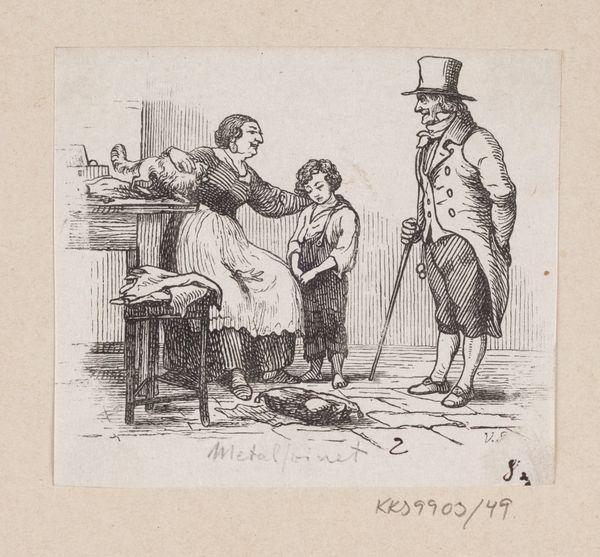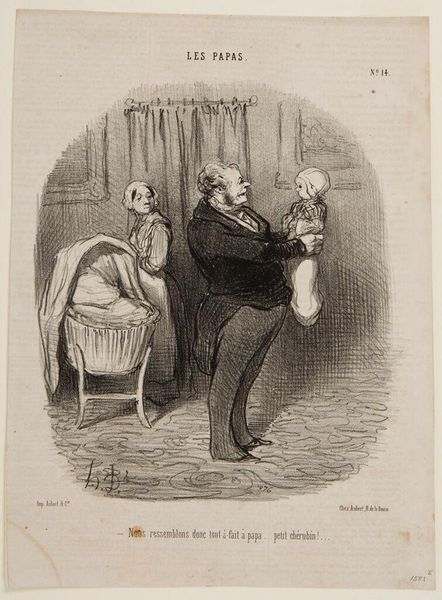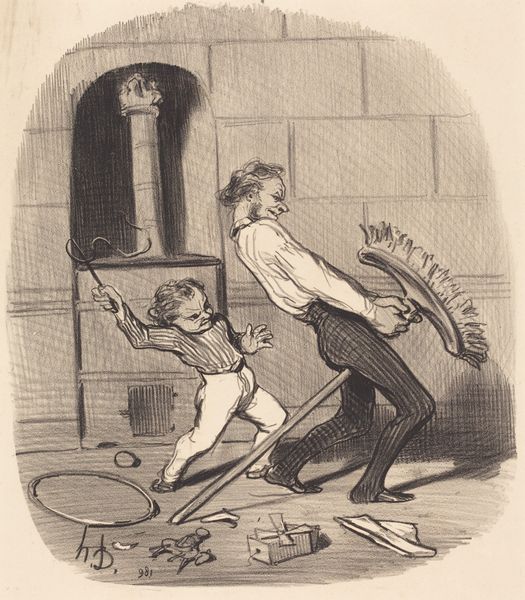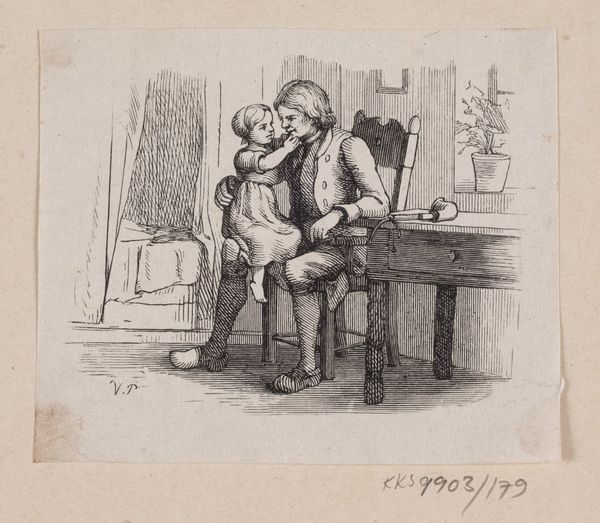
drawing, lithograph, print, paper
#
drawing
#
lithograph
# print
#
french
#
caricature
#
caricature
#
paper
#
child
#
pencil drawing
#
romanticism
#
genre-painting
Dimensions: 250 × 193 mm (image); 357 × 273 mm (sheet)
Copyright: Public Domain
Curator: Just look at that desperate glee! The movement is palpable, like we’ve walked right into a snapshot of fleeting joy. Editor: Indeed! Let's set the scene. What we have here is "The First Dance Lesson, from Les Papas", a lithograph created around 1848 by the celebrated French artist Honoré Daumier. It resides here at The Art Institute of Chicago. What strikes you about Daumier's compositional choices? Curator: The almost cruel humor. Look at the frantic energy—a dance of ineptitude and strained patience rendered as comedic critique, all amplified by the stark black-and-white contrast. The figures loom large, almost pressing against the picture plane. It feels almost…claustrophobic, despite the implied motion. The room itself becomes a character. Editor: That’s very perceptive. Daumier often used such settings to reflect societal constraints. Consider the period: the rise of the bourgeoisie in France. Daumier was acutely aware of the shifting dynamics and the pressures within domestic spaces, wasn’t he? These weren’t celebrations of pure sentimentality; they were social commentaries. Curator: Exactly! A snapshot of societal norms through domestic struggles, each character bearing coded meaning. It's a reflection on paternal roles and early childhood shaping… but does anyone notice the wall-portrait overseeing them? Or what about the fallen cloth draped on the left-side chair, acting like a curtain. I believe that what Daumier captures are symbols of societal constructs around class, parenthood, performance. He exposes human absurdity using irony, inviting the viewer to decipher unspoken truths. Editor: And by making them slightly ridiculous. Note how Daumier achieves his satirical edge: his manipulation of form—the elongated features, the awkward poses—heightens our understanding of his intent. We almost recoil at how candid and unapologetic he seems in calling out uncomfortable truths. Curator: Almost—but there's tenderness too. Despite all, you still see the gentle attempts to instruct and to love and to connect through play! I would argue the 'ugliness' in presentation reveals even deeper hidden beauty underneath! Editor: You've articulated that quite perfectly, allowing for multiple nuanced experiences while recognizing the visual markers that situate the lithograph firmly in social context. Ultimately, it is Daumier's commentary on class and bourgeois values that resonate across time, with symbols that we keep finding ways to decode again and again!
Comments
No comments
Be the first to comment and join the conversation on the ultimate creative platform.
